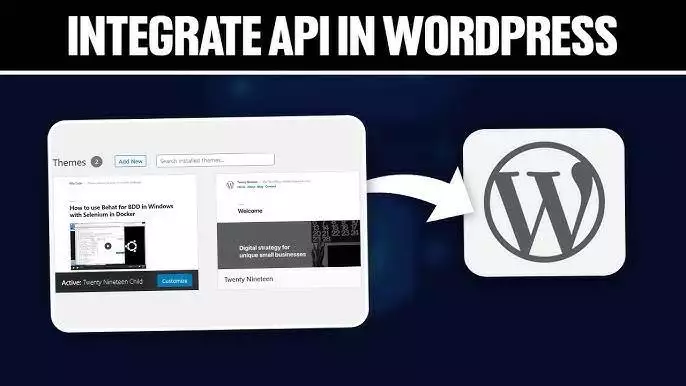
API integration is an essential skill for WordPress developers, allowing websites to connect with external services, fetch real-time data, and enhance functionality. Whether you're adding payment gateways, social media feeds, or third-party tools, APIs can make your WordPress site more dynamic and interactive. In this guide, we'll walk through everything you need to know about integrating APIs into WordPress efficiently and effectively.
What Is an API?
An Application Programming Interface (API) enables communication between different software applications. In WordPress, APIs allow developers to fetch and send data between WordPress and external services.
Why Use APIs in WordPress?
-
Fetch real-time data (weather updates, stock prices, social media posts)
-
Automate tasks (e.g., scheduling posts, syncing product inventory)
-
Enhance user experience (interactive maps, chatbots, payment processing)
-
Connect WordPress with CRM, e-commerce, and marketing tools
Types of APIs in WordPress
WordPress supports various APIs for different functionalities:
-
REST API: Enables interaction between WordPress and external applications.
-
Plugin APIs: Allow plugins to extend WordPress functionality.
-
Third-Party APIs: Connect WordPress with external services (e.g., Google Maps API, Stripe API, Twitter API).
Getting Started with API Integration in WordPress
1. Understanding WordPress REST API
The WordPress REST API provides a way to interact with WordPress programmatically using JSON data.
Enabling WordPress REST API
WordPress REST API is enabled by default in WordPress 4.7+. You can access it by navigating to:
https://yourwebsite.com/wp-json/wp/v2/posts
This URL retrieves posts in JSON format, which can be used by external applications.
Fetching Data from WordPress API
You can retrieve posts using JavaScript:
fetch('https://yourwebsite.com/wp-json/wp/v2/posts')
.then(response => response.json())
.then(data => console.log(data));
2. Integrating Third-Party APIs into WordPress
Using APIs like Google Maps, Stripe, or OpenWeather can add valuable features to your website.
Example: Fetching Data from OpenWeather API
-
Get an API key from OpenWeather.
-
Use WordPress
wp_remote_get()to fetch data.
function fetch_weather() {
$response = wp_remote_get('https://api.openweathermap.org/data/2.5/weather?q=London&appid=YOUR_API_KEY');
$body = wp_remote_retrieve_body($response);
$data = json_decode($body, true);
return $data;
}
-
- Display weather data on your WordPress site.
-
Use API keys and OAuth authentication.
-
Restrict API access to trusted domains.
-
Validate and sanitize API responses.
-
Implement rate limiting to prevent abuse.
-
WP REST API Controller – Manage API endpoints.
-
WP Webhooks – Automate API-based workflows.
-
Custom API for WP – Create custom API endpoints.
echo 'Current temperature: ' . fetch_weather()['main']['temp'] . '°C';
3. Sending Data to External APIs from WordPress
Sometimes, you need to send data to an external API, such as form submissions or order processing.
Example: Sending Contact Form Data to a CRM API
function send_to_crm($name, $email) {
$response = wp_remote_post('https://api.crm.com/leads', [
'body' => json_encode(['name' => $name, 'email' => $email]),
'headers' => ['Content-Type' => 'application/json']
]);
return wp_remote_retrieve_response_code($response) == 200;
}
Securing Your API Integrations
Security is crucial when working with APIs to prevent unauthorized access and data breaches.
Best Practices for Secure API Integration
Using Plugins to Simplify API Integration
If you're not comfortable coding, several plugins can help integrate APIs into WordPress easily.
Popular WordPress API Plugins
Conclusion
Integrating APIs in WordPress unlocks endless possibilities for improving your website’s functionality. Whether you're fetching real-time data, automating tasks, or connecting to third-party services, understanding API integration will take your WordPress skills to the next level.
Start experimenting with APIs today, and enhance your WordPress website with dynamic and interactive features!
📧 Stay Updated
Get the latest web development tips and insights delivered to your inbox.




